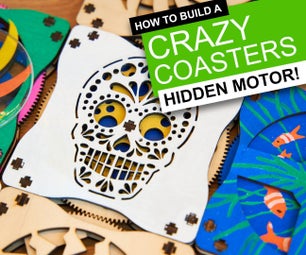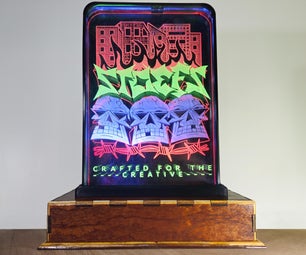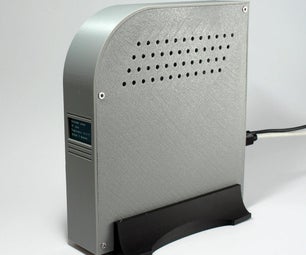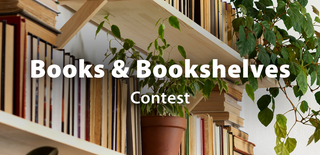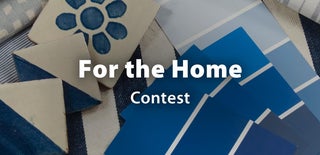Introduction: Hot Glue LED Diffusion
What would I do without LEDs and hot glue? They are integral components to nine tenths of my projects. Well, while I was working on my first instructable I noticed that the LEDs I'd hot glued onto the wires kind of made the translucent glue glow a bit. I thought to myself, "What would happen if I put the glue on the focus end?" And so, this instructable was born.
Usually when I'm diffusing a "Water Clear" LED I grab the sandpaper and go to town, but this works just as well if size isn't a problem, and looks better in the end.
***UPDATE 5/3/10: Hey, if you make your own Hot Glue diffused LED project and post some pictures in the comments section, I'll give you a patch!***
Step 1: Gather Materials
Okay, this is the hard part! You'll need:
1. LEDs
2. Hot glue sticks (low temp or multi-temp)
3. Hot glue gun
Man, that was hard. I got tired just writing that exhaustive list. You may also want some sort of breadboard, some resistors, maybe a thumbtack and a couple of toothpicks. If you're reading this, you probably already have all of those things.
Step 2: Glue!
Alright, now decide if you want to go with low temp or high temp mode. High temp means you have more time to shape the glue, low temp means it doesn't take as log to dry. Get ready for some hot glue-on-LED action!
Okay, I lied about the last step, it really wasn't that hard. THIS is the hard part.
1. Hold the glue gun in your right hand, or left hand if you're a lefty (or your left hand if you're a rebel! Or your right hand if you're a Leftist Rebel, you Commie!)
2. Hold the LED in your other hand by the leads
3. Now, VERY CAREFULLY put some GLUE on the LED. Be VERY, VERY CAREFUL!!! This is just like when the ghostbusters crossed their proton streams, and you might just cause a rip in the space-time continuum!
4. But seriously, at this point you'll have to kind of be careful about where the glue flows. If you watch where it's going and keep the LED in motion for a while, you'll be able to get it into a pretty regular shape.
5. After about a minute or so (depending on temperature and how much glue you used) the glue will stop flowing, but it will still be somewhat tacky for a few minutes, so if you've got a spare alligator clip, you might want to clip the LED somewhere it won't touch anything. You probably don't want fingerprints or other gunk in the glue.
Step 3: Done?
So there you have it, a nicely diffused LED, without using any sandpaper. I think they're pretty ascetically pleasing this way.
Of course, about five seconds after I'd finished the first one, I realized that if some glue looked good, more glue might look better . . .
Step 4: Sculpt!
So, why not add some more glue? Why shouldn't you add a LOT more glue? The LED doesn't have to have a simple round bulb, why not play around a bit? Grab that toothpick and the thumbtack and use them to sculpt the somewhat tacky, but not fully dried glue.
Here are some shots of the work in progress:
Step 5: Final Thoughts
So, this was a fun way to blow an hour. I made a pile of interestingly shaped LED bulbs, and in fact I had an idea for my next instructable that will follow soon.
I'm really not sure what I'm going to do with these. I've been making sun jars left and right, so I might see what one of them looks like in the jar, without frosting the glass. I'm also thinking I might get a string of LED christmas lights this winter and make individual bulbs for each light.
It might also be fun to make some sort of an injection mold and make interesting shapes for the bulbs that way. I'm not really sure how that would work, especially the part about making sure the glue doesn't stick to the mold. If anyone has any thoughts on the matter, I'd love to hear them.
Please leave a comment, positive or negative, and also please rate this instructable. I'd really like to know what you all think about this instructable, my writing style, the idea itself, etc. It's hard to tell what people think when you have 2800 views and only 8 comments, like on my first instructable. I'd also like to see pictures of any interesting glue sculptured LEDs you make yourselves.
Most importantly, thanks for looking, and I hope you enjoyed it!
Remember, anyone who posts pictures of their own hot glue diffused LED project in the comments gets a DIY patch!
Participated in the
The Instructables Book Contest







